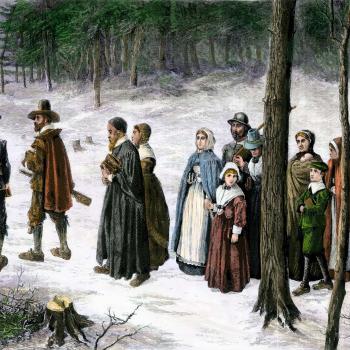I’m not sure Answers in Genesis knows what science is.
Here’s how Ken Ham began a recent blog post:
An article appeared recently in the “Space + Science” section of CNN’s website. This piece was titled, “Ancient humans are having a moment—Here are the fascinating things we’re learned this week about our ancestors.” The lengthy article then described a series of discoveries and, more importantly, their interpretations, as it relates to our supposed evolution. Several of these studies change what evolutionists thought they knew about our ancestry. One week and humanity’s evolutionary story is rewritten … again (as it has been again, and again, and again, and again . . .)!
This is how science works. Scientists adjust their hypotheses when they make new discoveries or uncover new evidence. Consider how intellectually dishonest it would be to refuse to change your ideas about how something happened when confronted with evidence that shows the thing you’re studying didn’t happen the way you thought—that it happened a different way. There would be a problem if a scientist didn’t adjust their hypothesis when confronted with contrary evidence.
Ham doesn’t see it this way because, as a fundamentalist Christian, he lays claim to absolute certainty. He believes that the Bible is infallible and inerrant, and that he knows what it says. From that vantage point—the vantage point of absolute certainty—science seems like quicksand.
What are the changes Ham is referencing?
Australopithecus (think “Lucy”) was originally considered an ancestor to humans but now they’ve reinterpreted the evidence and believe her species was living at the same time as Homo erectus, a supposed “early” human.
This really is just how science works.
Ham is not impressed:
What this CNN article really highlights is the shifting sands of evolution—it’s a constantly changing story. Now many evolutionists will say that’s because that’s how science works—old ways of thinking are always being discarded or refined as we discover new things.
Well … yes.
But that’s really not what we see when it comes to evolution. What we really witness is an idea so elastic that it doesn’t matter if the data or a new find totally contradicts everything they thought before—they just fit the story to accommodate the new data. And then they change it again in a year when a new find changes everything.
That’s really just explaining how science works, once again. When there’s a new find, the hypothesis is adjusted to accommodate the new data. When there’s another new find, it’s adjusted again.
The claim here is that the theory of evolution is “so elastic” it can be adjusted to fit literally any data. This isn’t quite true, but there is a piece of it that is. It has long been said that finding a fossil rabbit in the precambrian layers would disprove evolution, but I’ve always been skeptical of that claim. Why? Because if we found a fossil rabbit in the precambrian, the immediate question would be whether the rock layers had bucked or shifted, jumbling the fossils and setting them out of order.
The evidence for evolution is so strong—and so cross disciplinary—that data contradicting it would have to be incredibly, incredibly robust. Imagine if someone told you that there’s a person who can levitate, and that this disproves the theory of gravity. You’d want some pretty serious proof of this, yes? Even if you saw this person in person and witnessed them levitate, you’d still want some pretty solid evidence that it isn’t a trick. Why? Because the evidence behind the theory of gravity is overwhelming.
Yes, the theory of evolution is adjusted to fit new evidence, and not just thrown out, but there are reasons for that—the same reasons that finding an actually levitating person would likely lead to adjusting the theory of gravity, and not throwing it out altogether. There’s also a very large difference between adjusting a theory to fit new evidence and finding evidence that actually contradicts the theory as a whole. Concluding that Lucy was a species living at the same time as homo erectus, rather than an ancestor to humans, does not at all contradict the theory of evolution.
But perhaps the problem is, in part, projection. Ham has decided that the creation stories in the Bible are literally true, and there is literally nothing that would change his mind about that. He claims that the scientific evidence also backs up these stories, but he also states that the science is not why he holds these beliefs—he believes the Bible is literally true for epistemological reasons (this gets complicated, but it boils down to a claim that logic and reason could exist apart from the stories in the Bible).
No evidence will ever change Ham’s mind about young earth creationism. Instead, he will always find some way to fit any new scientific evidence into his young earth creationist model (or simply deny it exists). He believes that scientists who accept an evolutionary model are doing the same thing—that because nothing would change his mind, nothing will change theirs, either.
And then, when they do change their minds about some particular piece of how evolution took place, he interprets that as weakness, holding it in contrast to his certainty.
This is not how science works.
I have a Patreon! Please support my writing!















